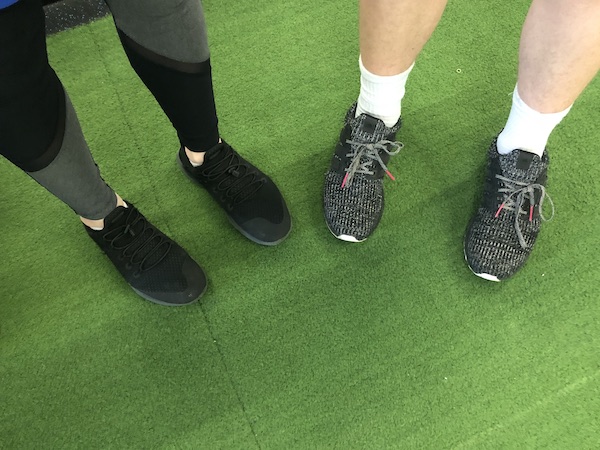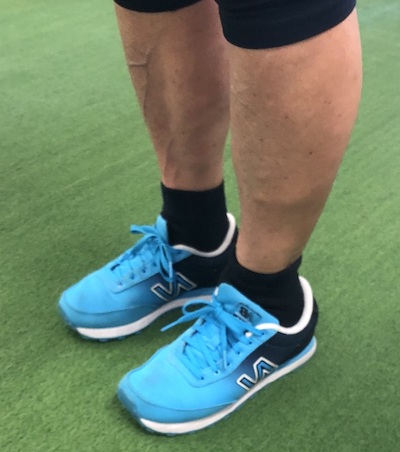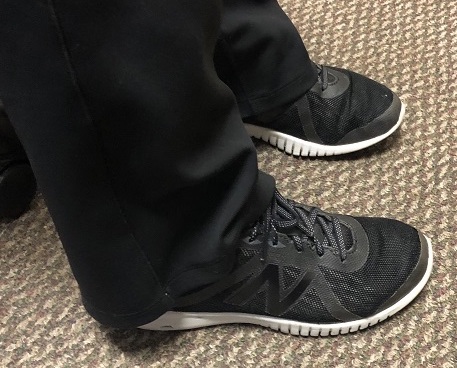Feet Stink

… Well, maybe after a workout with Pete or Boot Camp with Larry, or, in the other sense of the word, if you are having foot pain that is wreaking havoc on your ability to function. Despite being a hard-working base of support, feet are often under-appreciated. Sure, in the summer months we may pamper them with a pedicure but are we really meeting the needs of our pedal friends? What exactly do feet need to be happy?
- Firstly – give them some individual attention in the shower and during the drying process.
- Be sure to provide them with a happy place to live. Footwear specific to your activity and your foot type offers the best chance at maintaining good foot health. Shoe design is geared to provide the most appropriate cushioning and stability for the individual sport. A walking shoe is unlikely to provide adequate support for running.
- Buy shoes specific to your foot type and/or shape. There are basically 3-foot shapes. An easy way to identify yours is to place a brown paper bag over your bath mat. Step onto the bag as you exit the shower and examine the wet footprint you leave behind. An imprint of almost the entire foot indicates a low flexible arch, commonly known as flat-footed. The arch lacks support and is a common contributing factor to ankle and knee injuries. Motion-control shoes are designed to provide the support that the foot lacks.
- An imprint of the forefoot and heel connected by a curved band is considered normal. This foot type has just the right amount of flexibility to allow some pronation with ground contact and enough stability to prevent too much forward roll. Stability shoes may offer some additional medial or inside support to assist in this process.
An imprint of the heel and forefoot to allow proper distribution by a thin band is indicative of a rigid foot that doesn’t pronate sufficiently to allow proper distribution of weight-bearing forces throughout the foot. Weight is often concentrated on the lateral or outside border of the foot. This foot type is happiest in a cushioned shoe.

Another factor to consider is the shoe fit. In the absence of a perfect fit, in general, a little bigger is better than a little tight. Your feet are unlikely to shrink and, in fact, tend to get bigger later in the day, so best to save your shoe shopping expedition for the afternoon or evening. Other factors that influence foot size are weight gain, including that associated with pregnancy, and chronic lack of support (think of flip flops). These can lead to flattening of the arches resulting in lengthening of the foot. It’s not a bad idea to have your feet measured periodically to determine your actual size. A padded sock can be helpful in accomplishing proper fit as can lacing through all of the eyelets. Excess movement of the foot in the shoe can lead to your toes jamming up against the front of the shoe resulting in toe or nail injuries.
 So, consider these few basics as you walk towards the goal of happy feet!
So, consider these few basics as you walk towards the goal of happy feet!
